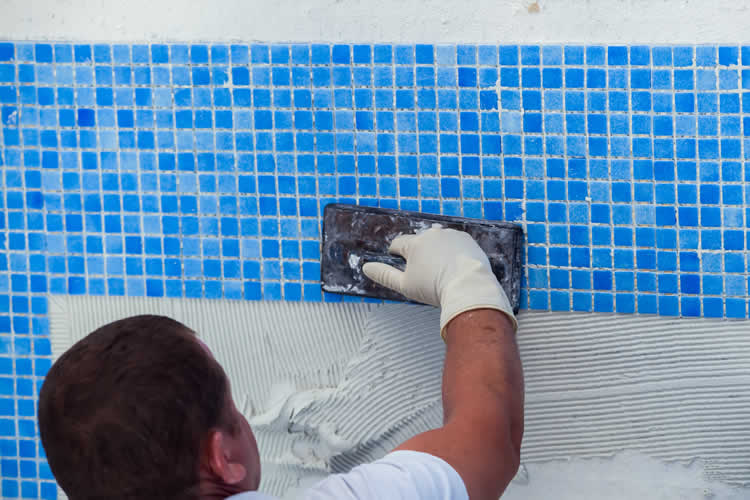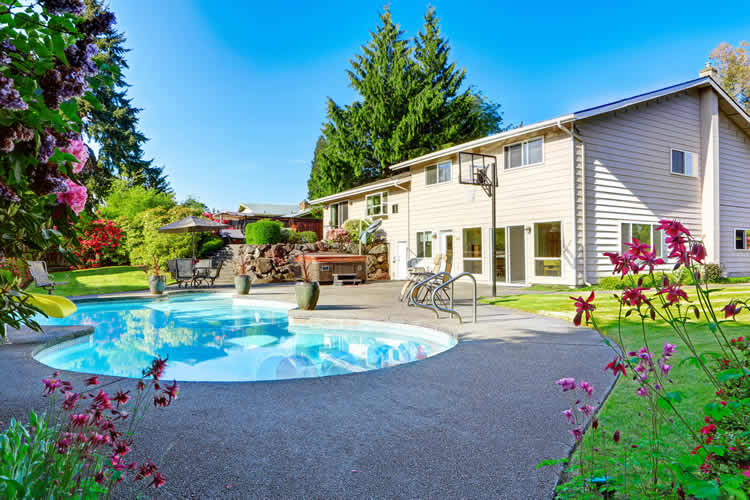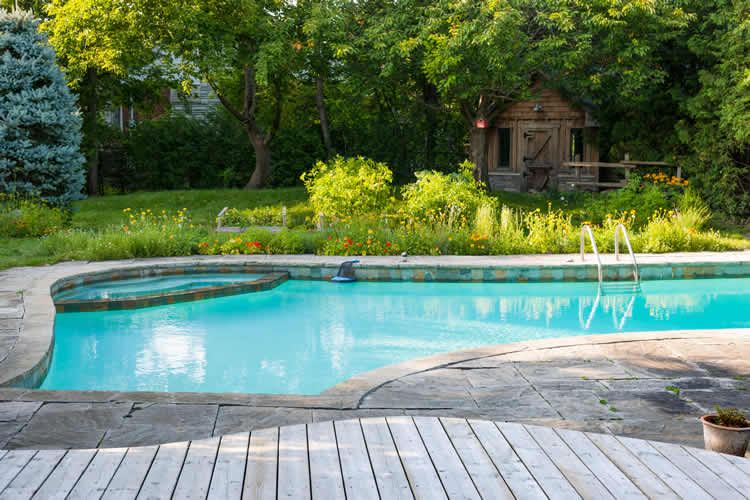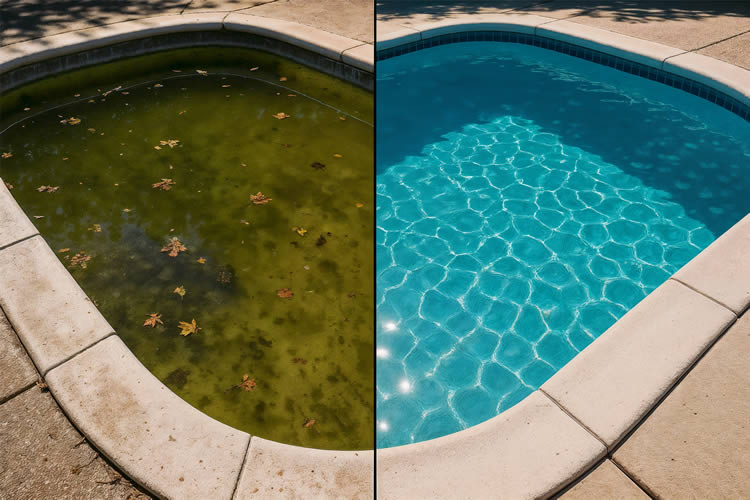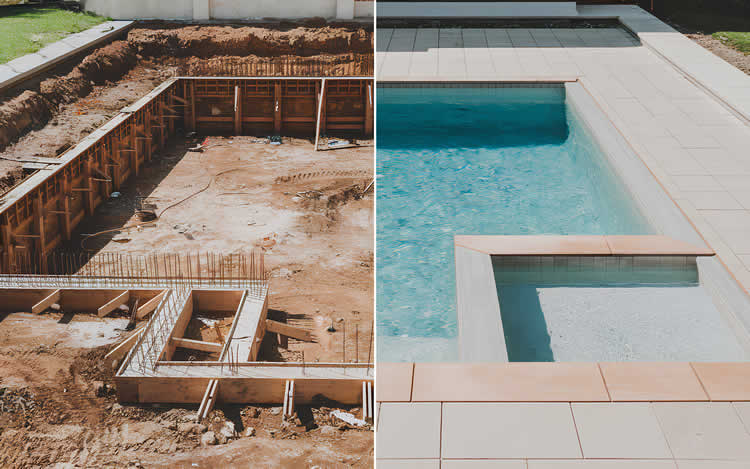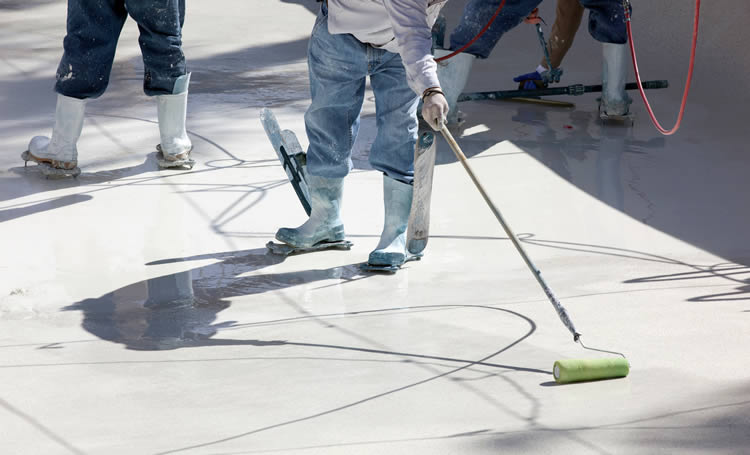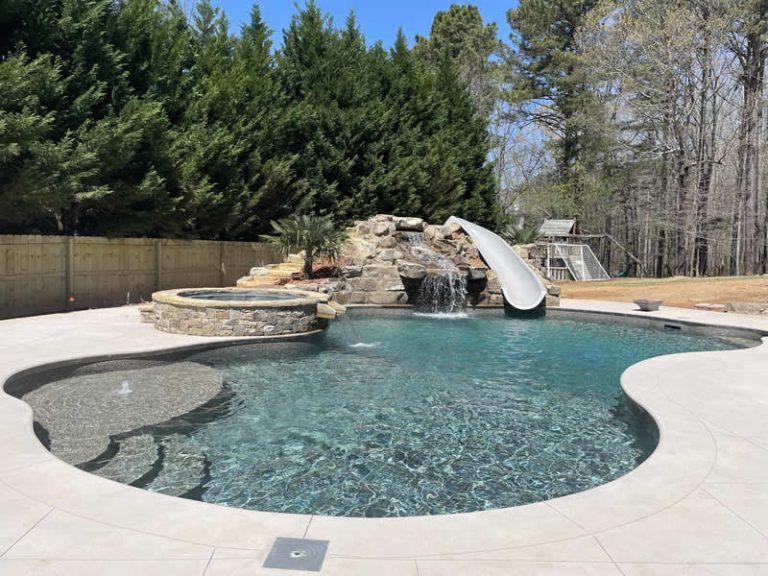Replacing Pool Tile, Coping, and Waterline Finishes
Sometimes, it’s not your pool that’s showing its age — it’s the details around it. Maybe the tile’s chipped, the grout’s cracked, or the coping stones are starting to loosen. You might even notice that faint white ring of calcium at the waterline that never seems to scrub off.
The good news? These problems aren’t just fixable — they’re the perfect excuse to give your pool a fresh new look. Replacing tile, coping, and waterline finishes is one of the most cost-effective ways to modernize an older pool and add years of protection.
Understanding the “Frame” of Your Pool
Think of your tile and coping as your pool’s frame. They don’t just add beauty — they seal and protect the shell from water damage and shifting.
- Tile: Lines the top few inches of the pool interior, where water meets air.
- Coping: The cap or edge that sits between the pool shell and deck.
- Waterline Finish: The visible zone just below the coping, often tiled or accented with decorative stone.
When these materials fail, water can seep behind the structure, leading to erosion or cracking. That’s why appearance and performance go hand in hand.
Common Signs It’s Time for Replacement
- Loose or Missing Tiles – A few may seem minor, but missing sections expose plaster and let water infiltrate.
- Cracked Coping or Grout – Especially after freeze-thaw cycles or heavy rain.
- Persistent Calcium Buildup – White or gray crusty deposits that resist cleaning mean your sealants have worn away.
- Outdated Colors or Styles – Blue mosaic patterns from the 2000s date your entire backyard instantly.
- Sharp or Rough Edges – A safety concern for swimmers that indicates structural wear.
If you’re resurfacing your pool or redoing your deck, it’s the perfect time to address these details together for a unified finish.
Choosing New Tile and Coping
Georgia homeowners have no shortage of options, from natural stone to modern glass mosaics. The best choice depends on your budget, aesthetic, and how much maintenance you’re willing to do.
1. Ceramic and Porcelain Tile
Affordable, durable, and available in endless colors. Glazed options resist fading and staining — a solid choice for traditional pools.
2. Glass Tile
Highly reflective, vibrant, and modern. It catches sunlight beautifully and pairs perfectly with LED lighting for nighttime sparkle.
3. Natural Stone Coping (Travertine, Limestone, Slate)
Elegant and cool underfoot. Travertine remains a Georgia favorite because it handles heat and humidity well without getting slippery.
4. Paver or Concrete Coping
Budget-friendly, easy to install, and versatile in shape and texture.
5. Quartz and Pebble Waterline Finishes
Offer a seamless transition between tile and plaster, creating a high-end look that’s also practical.
Mixing materials — like stone coping with glass tile — can create a custom designer aesthetic without breaking the bank.
Design Tips for a Fresh Look
- Match the deck: Coordinating deck colors and textures with coping ties the space together visually.
- Go lighter: Lighter tones make water appear bluer and more inviting.
- Use contrasting grout: It highlights tile patterns and adds dimension.
- Add accent bands: A row of decorative tile or a metallic strip at the waterline elevates the entire pool instantly.
- Consider LED lighting reflection: Certain finishes look stunning when lit from beneath the surface.
Georgia’s bright sunlight can bleach out cheap tiles quickly — invest in UV-resistant materials rated for pool use.
The Installation Process
A standard tile and coping replacement project typically takes 5–10 days, depending on pool size and weather.
Step 1: Drain the pool partially (down to tile level).
Step 2: Remove old tile, grout, and coping.
Step 3: Repair substrate and reset bond beam if needed.
Step 4: Install new tile and coping with waterproof adhesives.
Step 5: Re-grout, seal, and refill the pool.
If you’re resurfacing or remodeling at the same time, your builder can coordinate the sequence so each material cures properly.
Maintenance After Replacement
To keep your new finishes looking new:
- Maintain balanced water chemistry. Acidic water eats grout; high calcium causes scaling.
- Avoid harsh scrubbing pads. Use soft brushes and non-abrasive cleaners.
- Seal porous materials. Especially natural stone, to prevent staining and mold.
- Check for cracks annually. Early repair prevents costly structural issues.
A well-installed and maintained coping and tile system can last 20+ years, making it one of the smartest long-term upgrades.
Frequently Asked Questions
Q: Can I replace tile without draining the entire pool?
Yes — most tile work only requires lowering the water level below the tile line, not a full drain.
Q: Is natural stone too slippery for coping?
Not if you choose tumbled or textured finishes. Travertine and limestone stay cooler and offer excellent traction.
Q: Can I add LED lighting or spillover features during tile replacement?
Absolutely. It’s an ideal time to embed lighting, water features, or spa spillways while your builder has access to the bond beam.
Final Thoughts
Replacing pool tile, coping, and waterline finishes might sound like cosmetic work, but it’s actually preventive maintenance in disguise. It keeps water where it belongs, prevents structural wear, and gives your backyard a fresh, modern feel.
At My Aqua Fun Pools, we specialize in pool renovations that blend form and function. Whether you want to restore your pool’s original elegance or create a completely new look, our team can help you select durable materials that look beautiful in Georgia’s climate — and last for years to come.

